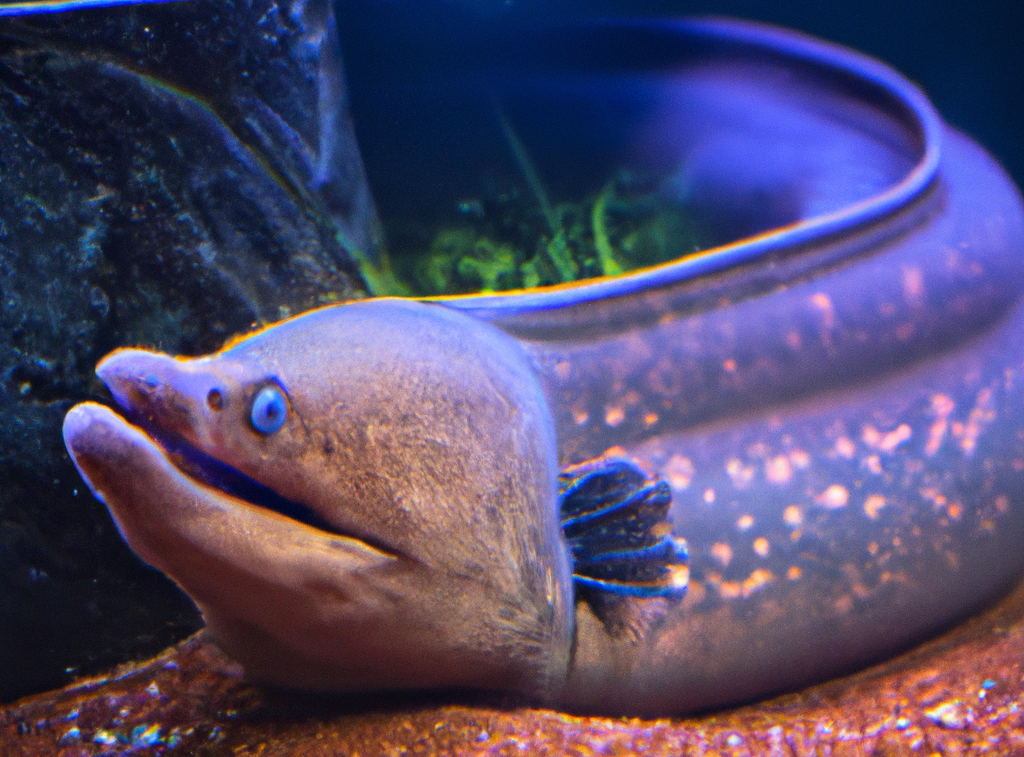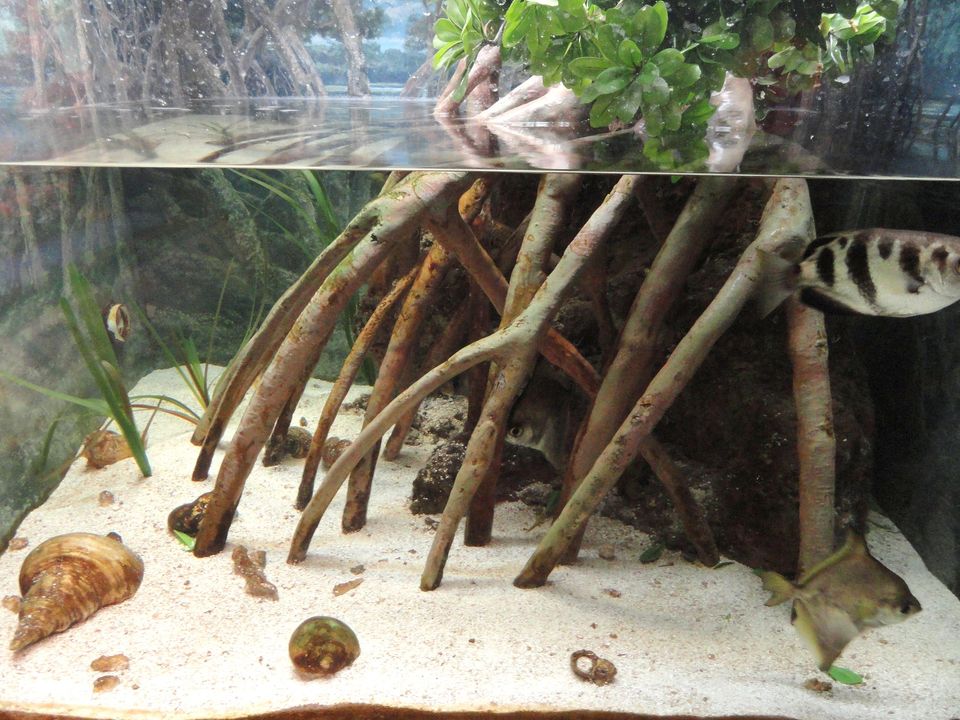Keeping Electric Eels in a Home Aquarium - Starter Guide for your Research
Caring for electric eels in a home aquarium can be a challenging but rewarding experience. Electric eels are highly intelligent and have complex social behaviors, and they have unique physical and environmental needs that must be carefully met in order to thrive.

Warning
Introduction
Electric eels are a type of knifefish that are native to the Amazon and Orinoco river basins in South America. Despite their name, electric eels are not true eels, but rather a type of bony fish. They are known for their ability to generate strong electric shocks, which they use for hunting and defense. Electric eels can grow to be very large, with some individuals reaching up to 8 feet in length.
Caring for electric eels in a home aquarium can be a challenging but rewarding experience. Electric eels are highly intelligent and have complex social behaviors, and they have unique physical and environmental needs that must be carefully met in order to thrive. Electric eels can be very sensitive to changes in their surroundings and can be prone to stress and illness if not properly cared for. Therefore, it is essential to thoroughly research the specific needs of electric eels and make sure that you are prepared to meet them before bringing an electric eel into your home. It is also important to consider the long-term care and commitment required for electric eels, as they can live for decades.
Before you proceed
Safety:
Electric eels have the ability to produce powerful electrical shocks, and it is important to take proper precautions to ensure the safety of yourself and others when handling or interacting with these fish. It is recommended to use insulated gloves or other protective gear when handling electric eels, and to be careful not to touch the eel's head or gills. It is also important to keep electric eels away from children, pets, and other vulnerable individuals, as accidental shocks can be dangerous.
Expertise:
Electric eels require a high level of care and expertise to thrive, and it is important to have a thorough understanding of their needs and requirements before bringing one into your home. It is recommended to research and seek advice from experienced aquarists or veterinarians before bringing an electric eel into your home, and to be prepared to invest the time and resources necessary to provide proper care.
Compatibility:
Electric eels are typically not suitable for community tanks, as they can be aggressive towards other fish and may consume smaller tank mates. It is important to research and choose tank mates carefully, and to provide plenty of space and visual barriers to reduce the risk of aggression. Electric eels may coexist peacefully with larger, non-aggressive species, but it is important to monitor interactions closely and to be prepared to remove or relocate any fish that may be at risk.
Choosing an electric eel
f you are considering adding an electric eel to your home aquarium, it is important to carefully research and choose a healthy and well-adjusted individual. When choosing an electric eel, it is important to look for the following characteristics.
- Size: Electric eels can grow to be very large, with some individuals reaching up to 8 feet in length. It is important to choose an electric eel that is the appropriate size for your tank, and to provide plenty of space for the eel to swim and explore.
- Color: Electric eels are typically brown or black in color, with a slightly iridescent sheen. It is important to choose an electric eel with a healthy and natural color, without any visible abnormalities or discoloration.
- Behavior: Electric eels are active and curious fish, and it is important to choose an electric eel that is alert and responsive. Avoid choosing an electric eel that appears lethargic or inactive, as this may be a sign of poor health or stress.
- Health: When choosing an electric eel, it is important to look for any visible signs of illness or stress, such as white spots, visible parasites, or changes in behavior. It is also important to ask the seller or breeder about the eel's history and care, and to make sure that the eel has been raised in a healthy and stress-free environment.
- Age: It is important to choose an electric eel that is of an appropriate age for your tank and level of care. Young electric eels are typically more prone to illness and stress, and may require more frequent care and attention. Older electric eels may be more experienced and hardy, but may also have more specific care requirements
Setting up an electric eel tank
One of the most important considerations when setting up an electric eel tank is size and shape. Electric eels are large and active fish that require plenty of space to swim and explore. It is recommended to provide at least 200 gallons of space per electric eel, with a tank size of at least 300-400 gallons being ideal. Electric eels also require a tank with a long and narrow shape, as they are prone to collisions and injuries in tanks that are too wide or shallow. It is important to provide plenty of hiding places and visual barriers in the tank, as electric eels are sensitive to light and noise.
Proper filtration is also essential for maintaining the water quality and chemistry of an electric eel tank. Electric eels produce a lot of waste and require a high-capacity filter to keep the water clean and clear. It is recommended to use a canister filter or wet/dry filter for an electric eel tank, as these types of filters provide a high flow rate and large filter media capacity. It is also important to use a high-quality filter media, such as activated carbon or ceramic noodles, to remove impurities and toxins from the water.
Maintaining the right water temperature and pH is also crucial for the health and well-being of electric eels. Electric eels prefer a water temperature of around 78-82°F, with a pH range of 6.0-7.5. It is important to maintain a stable water temperature and pH in the tank to prevent stress and illness in electric eels. A heater and thermometer can be used to regulate the water temperature, and a pH test kit can be used to monitor and adjust the pH as needed. It is also important to perform regular water changes to keep the water clean and free of excess nutrients and toxins.
Caring for electric eels
Electric eels should be handled as little as possible, as they are sensitive to stress and can be prone to injury or illness. When handling electric eels, it is important to use caution and avoid rough or rapid movements. It is also important to wear protective gloves or use a net to avoid being shocked by the electric eel.
Providing a varied and balanced diet is also essential for the health of electric eels. Electric eels are carnivorous and require a diet rich in protein and nutrients. It is recommended to feed electric eels a variety of high-quality frozen or live foods, such as brine shrimp, bloodworms, and earthworms. It is also important to vary the diet with occasional feedings of pellets or flakes that are formulated specifically for electric eels. Electric eels should be fed small amounts of food once or twice a day, and any uneaten food should be removed to prevent contamination and excess waste.
It is also important to monitor the health and behavior of electric eels regularly, and to seek the advice of a veterinarian or aquatics specialist if any concerns arise. Electric eels are sensitive to changes in their environment and can be prone to stress and illness if not properly cared for. By providing the right care and attention, you can help your electric eel thrive and enjoy a long and healthy life in your home aquarium.
Conclusion
Electric eels are a unique and challenging species to care for in a home aquarium, and they require a high level of knowledge and expertise to thrive. While electric eels can be a rewarding and fascinating species to keep, it is important to thoroughly research their needs and make sure that you are prepared and equipped to provide the necessary care before bringing an electric eel into your home. Take this guide as a starting point in your research. With proper care and attention, electric eels can make a fascinating and rewarding addition to any home aquarium.




